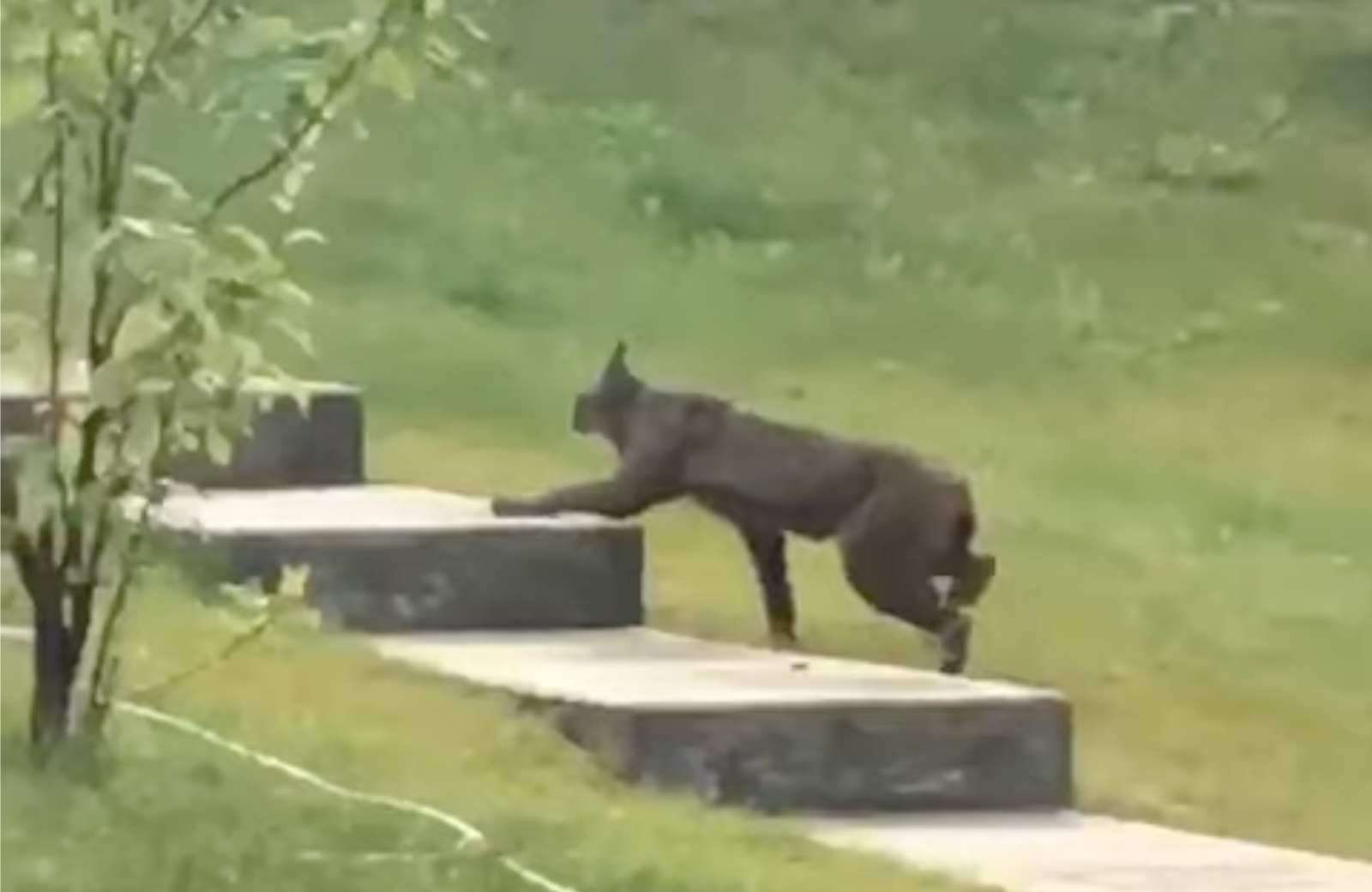The Canada Lynx, scientifically known as Lynx canadensis, is a species of lynx native to North America, encompassing regions in Canada and parts of the United States.
Typically, the Canada Lynx sports a light brownish-gray fur coat, but there have been occasional reports of individuals with black fur.

Until 2022, there were no photographs of these black-colored lynx, but a fortunate observer managed to capture some images that quickly went viral.
This unique lynx was spotted by a researcher at the University of Alberta in Canada. Thomas Jung, an employee of the Government of Yukon, recorded a video of the lynx using his cell phone.
The discovery was documented in an article titled “Paint it black: first record of melanism in Canada lynx (Lynx canadensis),” published in the journal Mammalia.
The footage was taken in a rural residential neighborhood near the Yukon city of Whitehorse. In the video, the lynx can be seen resting at a distance of approximately 50 meters. Some people and a dog were nearby, and the lynx eventually retreated when the dog began barking.
Canada Lynx are known for their solitary and reclusive nature. Despite being identified as a Canada lynx, the shaky video didn’t reveal many distinguishing features to experts familiar with the species.
Jung described the lynx’s appearance, stating, “It had a black coat with whitish gray guard hairs throughout, as well as whitish gray hairs in the facial ruff, rostrum, and dorsal regions.”
Most lynx species share similar coat colors, with Canada lynx often having silvery gray coats in winter, which transition to reddish-brown in the summer.
This lynx in the video is considered extremely rare due to its wide range of coat colors. According to Jung, such variations are often adaptations that may be either advantageous (adaptive) or disadvantageous (maladaptive) for evolutionary purposes.
Scientists have not yet determined whether melanism, the black coat coloration, offers any advantages or disadvantages. However, Jung views this trait as maladaptive because it could make the lynx more conspicuous in snowy environments while hunting in winter due to its darker fur.



